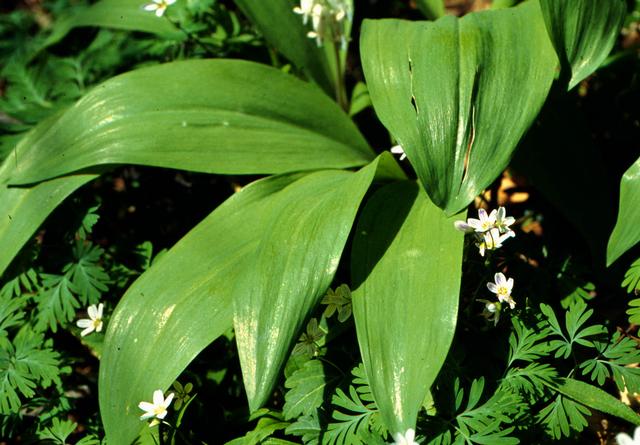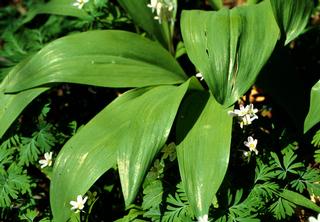

Large resolution .................................... Medium Resolution
Leaves oblong-lanceolate, absent at flowering time. (A. tricoccum.)
Leaves linear, present at flowering time.
Bulb-coats membranous, not fibrous-reticulated.
Umbel capitate; pedicels shorter than the flowers. (A. sibiricum.)
Umbel loose; pedicels much longer than the flowers.
Flowering umbel nodding.
Perianth campanulate, white or pink, its outer segmants acute.
(A. cernuum.)
Perianth urn-shaped, purple, outer segments obtuse or notched.
(A. alleghaniense.)
Flowering umbel erect.
Leaves flat or channeled, all nearly basal. (A. stellatum.)
Leaves terete, hollow; flowers replaced by bulblets.
Filaments with a tooth on each side. (A. carinatum.)
Filaments simple, not toothed. (A. vineale.)
Bulb-coats fibrous-reticulated.
Capsule not crested.
Flowers mostly replaced by bulbets; scape 8' tall. (A. canadense.)
Flowers rarely replaced by bulbets.
Scape 1° -2° tall;pedicels 8"-12" long; perianth-segmants thin. (A. mutabile.)
Scape 4'-8" tall; pedicels 4"-6" long; perianth-segmants rigid in fruit. (A. Nuttallii.)
Capsule-valves with 2 short crests. (A. reticulatum.)

Allium tricoccum Aiton |
||
| AREA | STATUS | REFERENCES |
| North America: Continental United States; Canada | Yes | Nault, A. and Gagnon, D., |
| Eastern North America: United States east of Mississippi; Ontario and eastern Canada | Yes | Nault, A. and Gagnon, D., 1993 |
| Southeastern United States: AL AR DE DC FL GA KY MD NC SC TN VA WV | Yes | Jones, 1979 |
| Southern Appalachian States: AL GA KY MD NC SC TN VA WV | Yes | Jones, 1979 |
| Coastal Plain | Yes | Mellinger, 1984 |
| Piedmont | Yes | Mellinger, 1984 |
| Blue Ridge Mountains | Yes | Jones, 1979 |
| Yes | Jones, 1979 |
| Ridge and Valley | Yes | Jones, 1979 |
| Cumberland Plateau | Yes | Jones, 1979 |
| Georgia | Yes | Mellinger, 1984 |
| Clarke County, Georgia | No | Jones, 1979 |
Geographic distribution of Allium
tricoccum in the United States.
Geographic distribution of Allium
tricoccum
in Canada.

Links to other Ecology sites:
|
National PLANTS Database Project |
National Plant Data Center (NPDC) |
|
Integrated Taxonomic Information System (ITIS) |
Ecological Site Information System (ESIS) |
